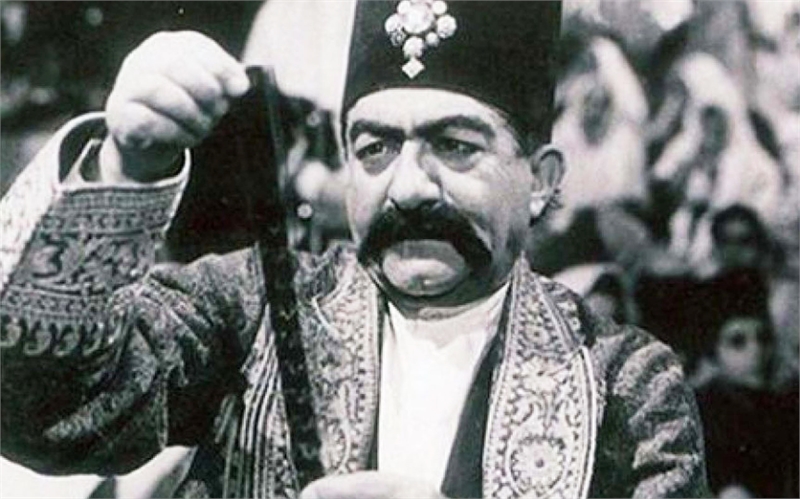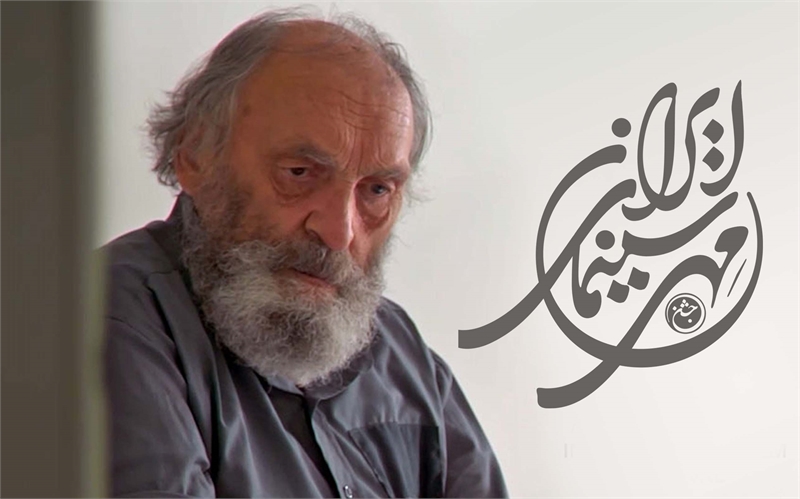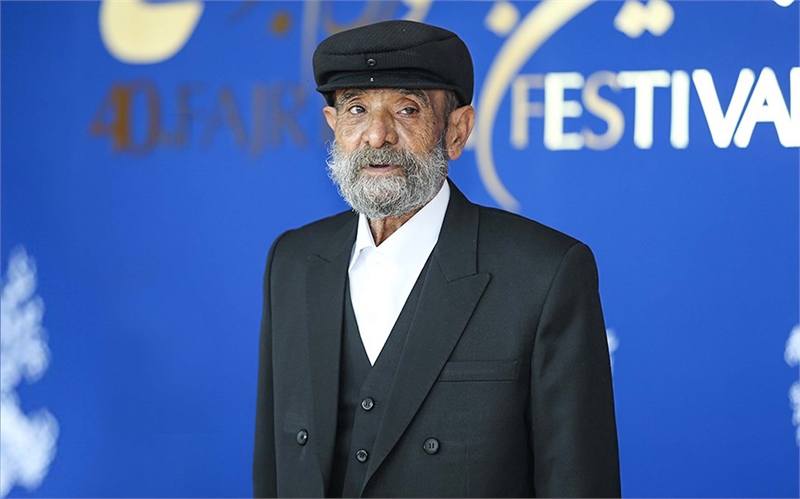Cinema should be regarded as a turning point and the culmination of all arts, alongside one another and their integration. Cinema, in its literal sense, means "movement," but in its modern definition, it refers to the combination of moving images and enlivening of narratives for a more profound comprehension of the subject. Cinema strives to depict various aspects of human life, ranging from the realistic to the surreal, in order to achieve a comprehensive understanding. Artists, through different cinematic genres, create fresh perspectives and diverse narratives. Artists create fresh perspectives and diverse narratives through various cinematic genres. These narratives or perspectives can encompass everything from history to art, and from a surreal idea to a philosophy of realism, including various aspects of the application of combined arts.

The film Naser Eddin Shah, Actor of Cinema, directed by Mohsen Makhmal Baf / 1991
One of the primary services that the production of cinematic films provides for the flourishing of a country's culture is its focus on the social and cultural themes of the people, aiding in the revival of ethnic and local traditions within society. The diversity of ecological climates and cultural variations in Iran generates various topics within this art form. Cinema connects deeply with social and cultural needs, honoring local customs and culture while fostering cultural understanding. The diversity of cultural issues in local Iranian communities, along with the multitude of dialects and customs, draws global attention to Iranian cinema from a cultural ecology perspective. Cinema is one of the most effective media for representing culture. Through cinema and film, the cultural heritage of one generation can be passed down to another, facilitating the processes of cultural assimilation and socialization.

Mr. Mahmoud Nazar Aliyan was born on September 29, 1950, in the city of Ardabil and has been residing in Zanjan for over 40 years. For more than 50 years, he has worked as an actor in cinema, theater, and television, striving to promote Iranian culture and art on both national and international stages. He is the founder of the Youth Cinema Society in the cities of Zanjan, Tabriz, and Ardabil, earning him the title of "The Father of Youth Cinema" in northwestern of Iran. He gained recognition as a theater actor through performances in plays by prominent figures such as Mr. Gholamhossein Saedi, Mr. Bahram Beyzai, and Mr. Mahmoud Dowlat Abadi. As a veteran artist, he has received an honorary diploma for acting for his role in the film "Ava" directed by Mr. Sasan Karimi, from the Women’s Film Festival in the United States, and was awarded the Best Supporting Actor for his performance in the film "Zire Noore Mah" directed by Seyyed Reza Mir karimi, at the 19th Fajr International Film Festival. Mr. Mahmoud Nazar Aliyan has acted in over 47 feature films, telefilms, and television series, as well as 45 short films, earning numerous accolades from various national and international festivals in the field of acting and establishing himself as a distinguished professor in this discipline.
Cinema in Iran emerged with the presence of Iranian film companies in 1941, and by 1961, artistic advancements in the country reached their peak. In 1964, Mrs. Forough Farrokhzad became the first woman to independently produce a documentary titled "Khane Siyah Ast." In the 1961s, Persian-language cinema experienced one of its peaks, and the Center for the Intellectual Development of Children and Young Adults became a suitable opportunity for the formation of cultural cinema in Iran during this decade. The Tehran International Film Festival, established in the 1970s, was considered the most important film festival in Asia and was the only A-category festival recognized by the International Federation of Film Producers in Asia. In the 1980s, following the Cultural Revolution in Iran that occurred after the 1978 revolution, the monthly magazine "Film" was published, and its impact on subsequent generations was undeniable in the life and continuity of cinema in Iran. Among the activists and contributors of this publication, prominent filmmakers and critics of today were born.
The film "Delshodegan"/ directed by the late Mr. Ali Hatami/ in 1991
In 1933, Mr. Ardeshir Irani produced the first Persian-language sound film titled "Dokhtare Lor" which received an unprecedented reception, paving the way for the production of other Iranian films. The first public cinema in Iran was inaugurated in 1904 by Mirza Ebrahim Khan Akkas Bashi, and in 1926, the first official and professional cinema hall in Iran, named Grand Cinema, was established by Mr. Ali Vakili in Tehran.

Mr. Ali Akbar Osanloo was born in Zanjan on March 21, 1948, and currently lives in Zanjan. For over 57 years, he has worked as an actor, author, and director in theater, radio, and television, striving to promote Iranian culture and art on both national and international platforms. Ali Akbar Osanloo began his artistic career at the age of 16 with singing and later gained recognition as a theater actor through his performances in plays directed by notable figures such as Mr. Morteza Zargari, Mr. Aziz Zargari, and Mr. Davood Fathali Beigi. As a veteran artist, he has received an honorary diploma for the Best Supporting Actor for his role in the film ''Negahbane Shab" directed by Seyyed Reza Mir karimi, at the 40th Fajr International Film Festival, and was recognized as the best voice artist at the ABU Radio and International Festival for his narration in the radio play "Chamcheh Khatoon" produced by Mr. Khosro Rasooli. Mr. Ali Akbar Osanloo has acted in over 67 stage performances and has produced and voiced more than 1,080 radio works, earning numerous awards from various national and international festivals in the field of acting and establishing himself as a distinguished professor in this discipline.
Cinema plays a role in conveying various aspects and patterns of life, allowing nations to observe each other's cultures through intercultural communication. In this context, Iranian filmmakers have sought to represent Iranian culture at international festivals by showcasing customs, myths, national symbols, popular culture, proverbs, handicrafts, beliefs, and Islamic and Shi'i poetry. Cinema, before being an industry or an art form, is a culture, and from this perspective, films presented at international festivals focus on representing Iranian society and culture beyond their rich and aesthetic aspects. Iranian artists have consistently shone at various festivals and events by creating impactful films that reflect a noble view of humanity and existence while expressing the culture of local communities. Iranian cinema is recognized as a cultural phenomenon with significant achievements in terms of presence and awards received on the international stage.
This text has been prepared and presented at the suggestion of the General Directorate of Culture and Islamic Guidance of Zanjan Province, in honor of Zanjani actors who have dedicated over half a century to representing Iranian culture and art in cinema.
---------------------
This article was contributed by Mr. Akbar Karimi, the international reporter for Arirang Culture Connect and the Founder and Managing Director of the Samte Ganjineye Ghoghnoos Cultural-Artistic Institute in Iran. His leadership in preserving and promoting Iranian intangible cultural heritage, along with his extensive experience in cultural-artistic research and his active participation in international forums such as UNESCO and ICCN, enriches his contributions to the global cultural dialogue.
Translated by Miss. Fereshte Abdi